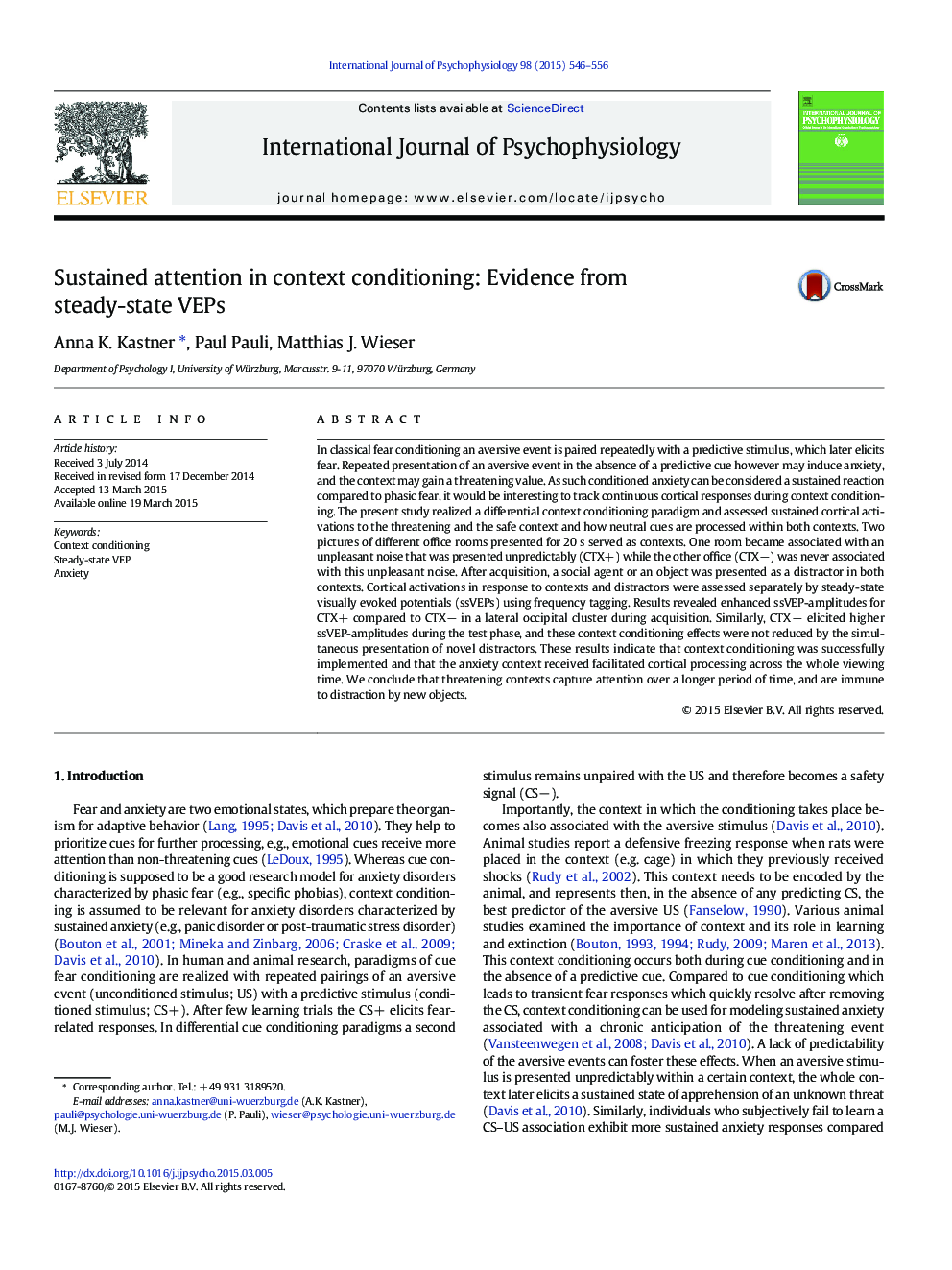| کد مقاله | کد نشریه | سال انتشار | مقاله انگلیسی | نسخه تمام متن |
|---|---|---|---|---|
| 930835 | 1474398 | 2015 | 11 صفحه PDF | دانلود رایگان |

• We tracked continuous cortical responses during context conditioning.
• Steady-state VEPs were assessed in response to context and novel distractors.
• ssVEP amplitudes revealed facilitated cortical processing of the threat context.
• This was not reduced by simultaneously presenting novel distractors.
In classical fear conditioning an aversive event is paired repeatedly with a predictive stimulus, which later elicits fear. Repeated presentation of an aversive event in the absence of a predictive cue however may induce anxiety, and the context may gain a threatening value. As such conditioned anxiety can be considered a sustained reaction compared to phasic fear, it would be interesting to track continuous cortical responses during context conditioning. The present study realized a differential context conditioning paradigm and assessed sustained cortical activations to the threatening and the safe context and how neutral cues are processed within both contexts. Two pictures of different office rooms presented for 20 s served as contexts. One room became associated with an unpleasant noise that was presented unpredictably (CTX+) while the other office (CTX−) was never associated with this unpleasant noise. After acquisition, a social agent or an object was presented as a distractor in both contexts. Cortical activations in response to contexts and distractors were assessed separately by steady-state visually evoked potentials (ssVEPs) using frequency tagging. Results revealed enhanced ssVEP-amplitudes for CTX+ compared to CTX− in a lateral occipital cluster during acquisition. Similarly, CTX + elicited higher ssVEP-amplitudes during the test phase, and these context conditioning effects were not reduced by the simultaneous presentation of novel distractors. These results indicate that context conditioning was successfully implemented and that the anxiety context received facilitated cortical processing across the whole viewing time. We conclude that threatening contexts capture attention over a longer period of time, and are immune to distraction by new objects.
Journal: International Journal of Psychophysiology - Volume 98, Issue 3, Part 2, December 2015, Pages 546–556